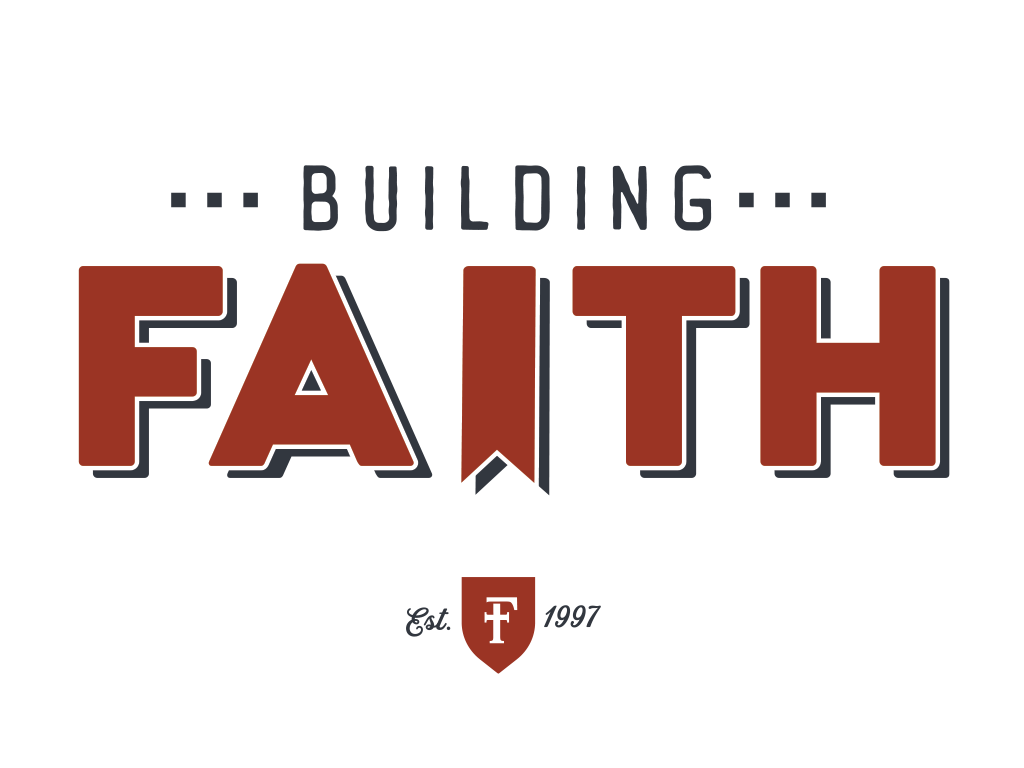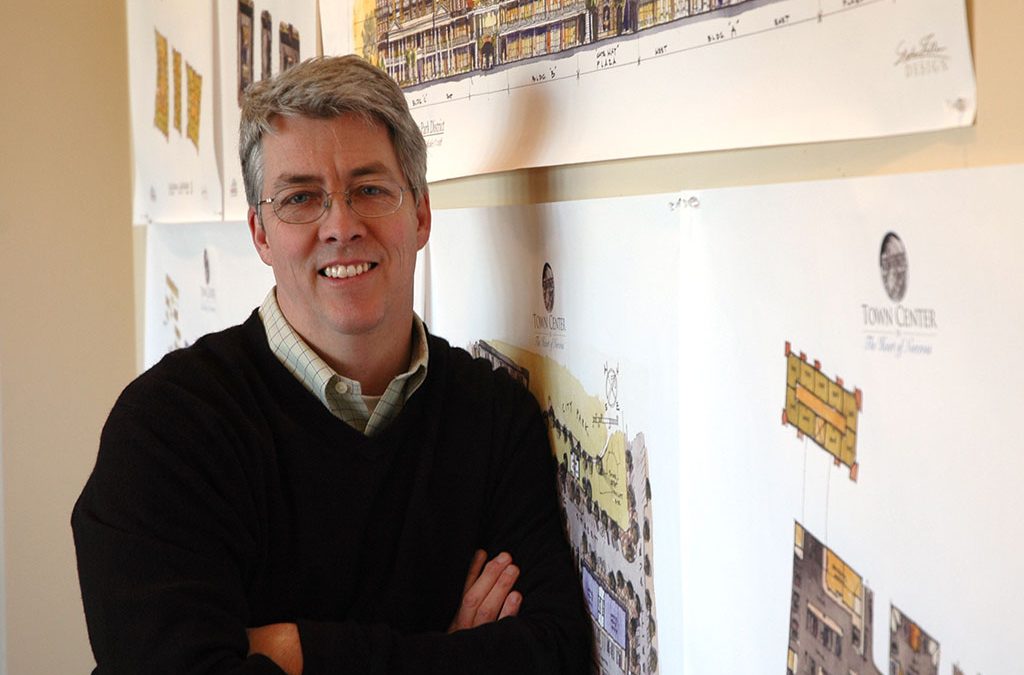If you’ve driven through Buckhead in recent days, you may have unknowingly seen some of the architectural work of Stephen Fuller. Stephen, as you may remember from last month’s Building Faith newsletter, is the new architect we’re working with to design our new church building.
Stephen is a very well-known architect in the Atlanta area. He’s designed several of the distinctive homes in the area, including those for the well-known CEOs of Home Depot and other major corporations. He’s also published a number of books, some of which you can find on Amazon.com and in other bookstores. He is an amazing resource that the Lord has sent our way. Here’s how we came to know Stephen.
Our process with architects began back in 2014. We knew we could choose from a range of church building designs, from ornate cathedrals to traditional colonial styles to more modern warehouse styles. Each one of these styles reflects something of the theological heritage of the churches who meet in them. However, we wanted to find an architectural partner who could help us express our alignment with the Reformation and baptistic heritages of traditional orthodoxy. Early on we began to pray that the Lord would direct our steps and help us to create something that would honor Him in every way.
Our first attempts with an architect proved how difficult the process would be. Even after spending time explaining the distinctives of our church, its doctrines and its ministry philosophy, the drawings they returned to us didn’t even come close to what we believed we had described to the firm. It was too large, too expensive, didn’t meet our ministry goals and didn’t communicate what we were hoping for in the overall aesthetic. As we attempted to “rescue” some of the design concepts, we sought the help of Jonna Ryan, who had some design experience in both commercial and residential applications. Working through the design with Jonna, we came to the conclusion that it would be nearly impossible to arrive at our desired goal with the design of this original architect. We would need to start over.
Working with Jonna, we were able to sketch out some ideas that more closely matched our ministry philosophy and better reflected our identity. It also reduced our overall square footage, which brought the costs down.
So with Jonna’s ideas in hand, we went out and found a new architect. This one came on a personal recommendation. He had substantial experience in working with churches and seemed to demonstrate a servant’s attitude. He was great to work with, but as we got into the project, we began to see that there was still a disconnect between what we envisioned and what the architect was returning in his drawings. This not only had the potential for a lot of frustration on both sides, it was likely going to lead to several costly re-designs along the way. At the same time, in God’s providence, as I was exploring interior design ideas, we came across Stephen Fuller Designs.
As I was reading through his website, I realized he wasn’t just a designer, he was an architect. On his website, he has a blog called Classic Places. He’s a classicist in his design scheme. He designs classical buildings – and that’s what we were wanting in our building. We weren’t looking for modern. We weren’t looking for art deco. We weren’t looking for a cathedral. We weren’t looking for the standard traditional. And we weren’t looking for a warehouse. While there’s certainly nothing wrong with those designs, we wanted a building that communicated our distinctive Reformed doctrines. And the classical designs resonated most with our Reformation-era distinctives.
As I was reading through one of his blog posts, he mentioned that he was scaling back some of his work. Building these multi-million-dollar distinctive homes in Atlanta was an honor for him, but he really wanted to dedicate his life to doing work that would have an eternal purpose. So he was working to start an organization much like Habitat for Humanity – but for churches. On his blog, he describes the work of this organization, called Building Blessings. “Building Blessings’ mission is to help build the kingdom of God here on earth by assisting local churches who are in distress and constrained by limited financial and design resources. By leveraging our design and presentation talents, Building Blessings assists churches to articulate creative solutions to their planning and construction needs. Once these tools are in place, Building Blessings aids and assists these churches to reach out to the community to attract the resources necessary to make their projects a reality.”
As far as our design situation was concerned, we were a church in distress. We just couldn’t find the right fit – until now.
In the middle of this blog, Stephen talked about how God had created this world around us and how it was full of beauty. He showed how God’s creation pointed to Him and glorifying Him. He also talked about how people in creative fields like architecture could reflect this beauty and glorify God through the designs he creates. And one way he could do this is through church buildings that glorify God.
While designing churches wasn’t his full-time profession, he had a heart that resonated with ours. So I called him up and asked him to meet over lunch to look at what we were doing. We met and started talking. We discussed the Reformation and how the Lord had brought the church out of darkness. As we talked, it was clear that we were speaking the same language. We had the same heart not only for design, but for function and purpose.
Then I pulled out the plans we had. He immediately buried his face in his hands and began to laugh. He said, “This is amazing! I can see what you’re trying to do. Now, it needs a lot of work, because right now, it’s messed up. But what you’re trying to do with this building could be revolutionary. This could set the pace for church buildings for the next 50-100 years. This could be absolutely amazing.”
As you can imagine, for me to hear this coming from one of the more prominent architects in Atlanta was so exciting and encouraging. So I asked him if he could help us by giving us some advice. He responded by saying, “I tell you what, let me take this and work on it over the next week or so and get back to you.” As he got into the project, he got more and more excited. He became more engaged and involved. He ended up going all the way around the entire building and changed the entire look of the building. He didn’t change the floor plan, he didn’t change the space. But he was able to bring a level of distinctiveness to it that changed it from something that looked good to something that looks amazing.
The deeper Stephen dug into the drawings, the more the Lord began to work on his heart. When he came back to me with the designs, he said the Lord had laid it on his heart to do all this work for free! He’s already put in 60-80 hours or more and hasn’t charged us a penny. That would normally run $250 an hour or so. He just wants to do it out of a love for the Kingdom of God and for His church.
This is really changing how we proceed on the building. It’s enlarged our vision for what the Lord can do through this building without enlarging our budget. In fact, it’s reduced our budget because we’ve moved away from the expensive contract we had with the other architect. And it’s allowing us to build a building that communicates our distinctives, fits our ministry needs, and provides the ability to grow as needed for much less than we would have spent.
Now, we have brought in another architecture firm that will help us out on an as-needed basis. We’ll pay them on an hourly basis to assist Stephen with some of the detail work that’s needed to get a building ready for county approval. As Stephen transforms our building design, I think you’ll be able to see how the Lord is going to continue to transform our ministry into one that impacts not only our local community, but potentially the designs of many other churches in the future. Those designs will be ready to reveal very shortly. We can’t wait for you to see them. This is a very exciting story about how God continues to walk us through this project and provide the resources we need to accomplish His purposes.

